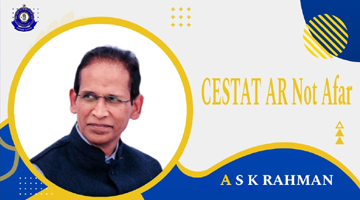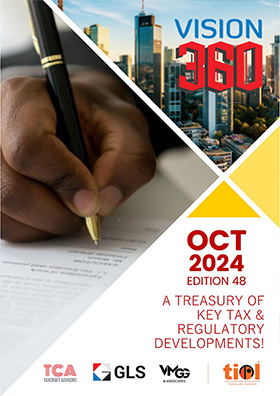Evidence of an Accomplice - Substantial change under Bharatiya Sakshya Adhiniyam, 2023
NOVEMBER 05, 2024
By Vinay Goyal
 AN accomplice is a particeps criminis, a participant in the offence. He is a guilty associate. An accomplice can provide first-hand evidence about an offence. But, the evidence of the accompslice is a double-edged sword. Such evidence can be influenced, motivated, and with a latent agenda. The evidentiary value of the uncorroborated testimony of the accomplice thus involves a risky proposition. This article briefly discusses the subtle but important change brought in this respect under Bharatiya Sakshya Adhiniyam, 2023 ("BSA" for short) and its implications in quasi-judicial proceedings.
AN accomplice is a particeps criminis, a participant in the offence. He is a guilty associate. An accomplice can provide first-hand evidence about an offence. But, the evidence of the accompslice is a double-edged sword. Such evidence can be influenced, motivated, and with a latent agenda. The evidentiary value of the uncorroborated testimony of the accomplice thus involves a risky proposition. This article briefly discusses the subtle but important change brought in this respect under Bharatiya Sakshya Adhiniyam, 2023 ("BSA" for short) and its implications in quasi-judicial proceedings.
Earlier, Section 133 of the Indian Evidence Act, 1872 ("IEA" for short) provided that:
"An accomplice shall be a competent witness against an accused person, and a conviction is not illegal merely because it proceeds upon the uncorroborated testimony of an accomplice."
Thus, the IEA provided that the accomplice is a competent witness against the accused. This "competence", preceded by a "shall", is an imperative competency. The section further provided that "merely because" a conviction proceeds upon an "uncorroborated" testimony of an accomplice, it would not be an illegal conviction.
However, the Courts have mostly been reading this absolute mandate under Section 133 in juxtaposition with illustration (b) to section 114 of IEA which provided that:
"114. Court may presume existence of certain facts.
The Court may presume the existence of any fact which it thinks likely to have happened, regard being had to the common course of natural events, human conduct and public and private business, in their relation to the facts of the particular case.
Illustrations
The Court may presume -
…
(b) "an accomplice is unworthy of credit, unless he is corroborated in material particulars."
As per this Section, the Court "may" presume that the accomplice is unworthy of credit, unless he is corroborated in material particulars. The expression "may" is an indication of discretion of the Court to ascertain the credibility of an accomplice.
Nevertheless, the Courts in India have consistently held that whilst it is not illegal to act upon the evidence of an accomplice, as a rule of prudence such evidence is unsafe unless corroborated in material aspects so as to implicate the accused. Thus, Illustration (b) of section 114 worked as a cautionary principle against the uncorroborated testimony of the accomplice.
The Hon'ble Apex Court in Haroon Haji Abdulla v. State of Maharashtra - 2002-TIOL-2753-SC-CUS in a Sea Customs case held that:
"This cautionary provision incorporates a rule of prudence because an accomplice, who betrays his associates, is not a fair witness and it is possible that he may, to please the prosecution, weave false details into those which are true and his whole story appearing true, there may be no means at hand to sever the false from that which is true. It is for this reason that Courts, before they act on accomplice evidence, insist on corroboration in material respects as to the offence itself and also implicating in some satisfactory way, however small, each accused named by the accomplice. In this way the commission of the offence is confirmed by some competent evidence other than the single or unconfirmed testimony of the accomplice and the inclusion by the accomplice of an innocent person is defeated. This rule of caution or prudence has become so ingrained in the consideration of accomplice evidence as to have almost the standing of a rule of law."
Now, Section 119 of the BSA carries forward the provisions of Section 114 of IEA. Illustration (b) of Section 119 (1) is verbatim the illustration (b) of Section 114 of IEA as mentioned above. However, there is a significant change in Section 138 of the BSA which corresponds with Section 133 of the IEA.
The Section 138 of the BSA reads as:
"An accomplice shall be a competent witness against an accused person; and a conviction is not illegal if it proceeds upon the corroborated testimony of an accomplice."
Under BSA, the evidence of the accomplice does need corroboration for having a legal basis for conviction. What was earlier followed as a rule of prudence has now got a statutory mandate. Further, now the provisions of Section 119(1), illustration (b) and Section 138 of the BSA are in harmony and accord. The combined legal mandate of both sections can be described as follows:
- An accomplice shall be a competent witness against an accused person.
- A conviction is not illegal if it proceeds upon the corroborated testimony of an accomplice.
- The Court may presume an accomplice as unworthy of credit, unless he is corroborated in material particulars.
In a nutshell, under BSA, it is a statutory imperative that the evidence of an accomplice requires corroboration to make it a legal basis for conviction. The rule of prudence adopted by the judiciary has become a statutory imperative as well.
This significant change in BSA vis-a-vis IEA has implications in quasi-judicial proceedings as well. In Mohamadbhai Chotubhai Cutpiecewala and Another v. Additional Collector of Customs, Ahmedabad [1986 (25) E.L.T. 413 (Tribunal)] the Tribunal held that although neither the provisions of the Criminal Procedure Code nor the provisions of the Evidence Act apply to an adjudication proceeding, yet the fundamental principles of criminal jurisdiction embodied in the Criminal Procedure Code and the natural justice shall have to be complied with. The Tribunal further held that the corroboration required is independent corroboration and not the corroboration of one accomplice's statement by the statement of another accomplice.
Bottom Line:
The BSA's new requirement for corroboration of accomplice evidence marks a significant shift from the IEA, embedding judicial prudence into statutory law to safeguard against wrongful convictions and uphold justice. This corroboration principle has implications in quasi-judicial proceedings as well.
[The author is a Consultant in GST and Customs matters and the views expressed are strictly personal.]
| (DISCLAIMER : The views expressed are strictly of the author and Taxindiaonline.com doesn't necessarily subscribe to the same. Taxindiaonline.com Pvt. Ltd. is not responsible or liable for any loss or damage caused to anyone due to any interpretation, error, omission in the articles being hosted on the site) |









 AN accomplice is a particeps criminis, a participant in the offence. He is a guilty associate. An accomplice can provide first-hand evidence about an offence. But, the evidence of the accompslice is a double-edged sword. Such evidence can be influenced, motivated, and with a latent agenda. The evidentiary value of the uncorroborated testimony of the accomplice thus involves a risky proposition. This article briefly discusses the subtle but important change brought in this respect under Bharatiya Sakshya Adhiniyam, 2023 ("BSA" for short) and its implications in quasi-judicial proceedings.
AN accomplice is a particeps criminis, a participant in the offence. He is a guilty associate. An accomplice can provide first-hand evidence about an offence. But, the evidence of the accompslice is a double-edged sword. Such evidence can be influenced, motivated, and with a latent agenda. The evidentiary value of the uncorroborated testimony of the accomplice thus involves a risky proposition. This article briefly discusses the subtle but important change brought in this respect under Bharatiya Sakshya Adhiniyam, 2023 ("BSA" for short) and its implications in quasi-judicial proceedings. 




